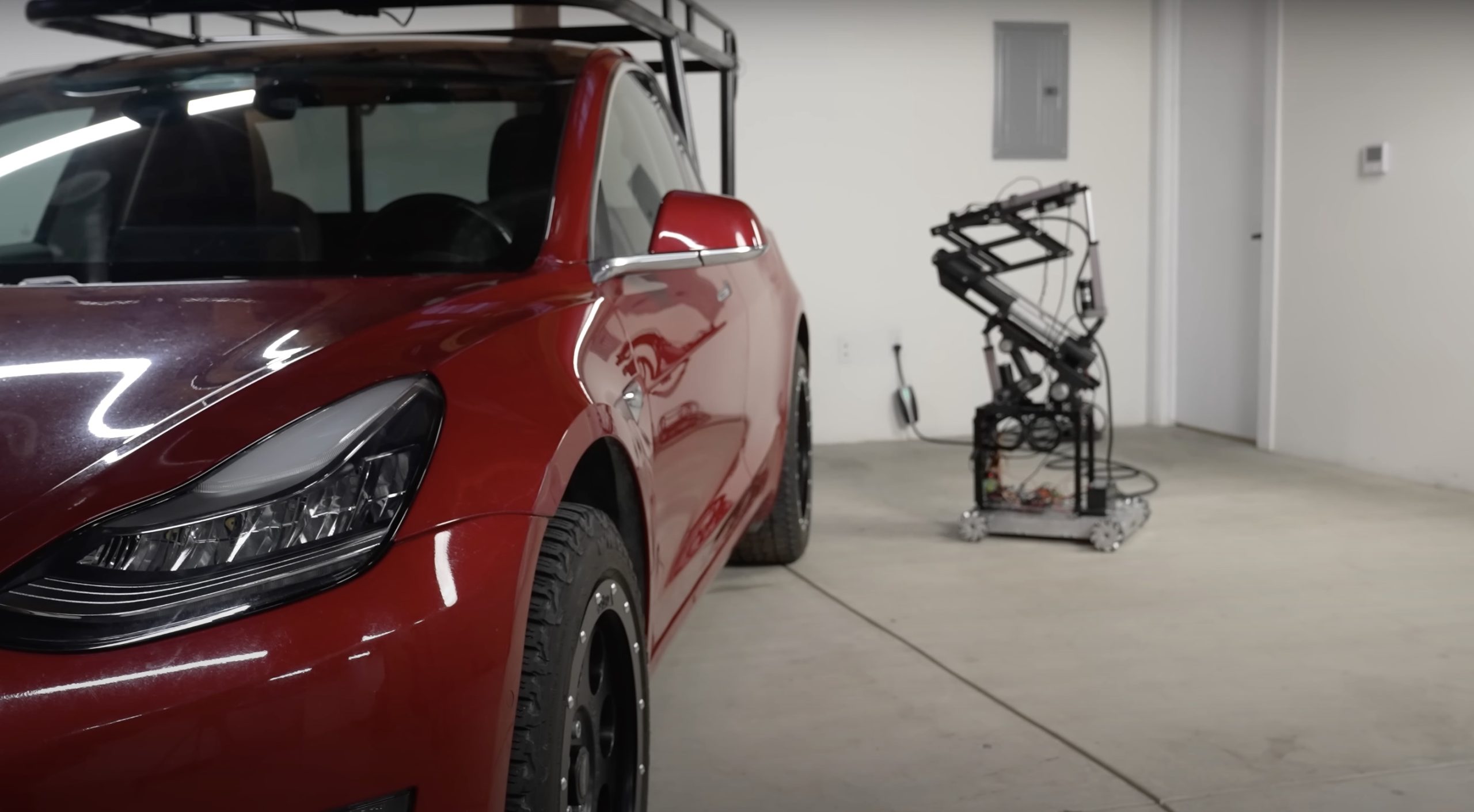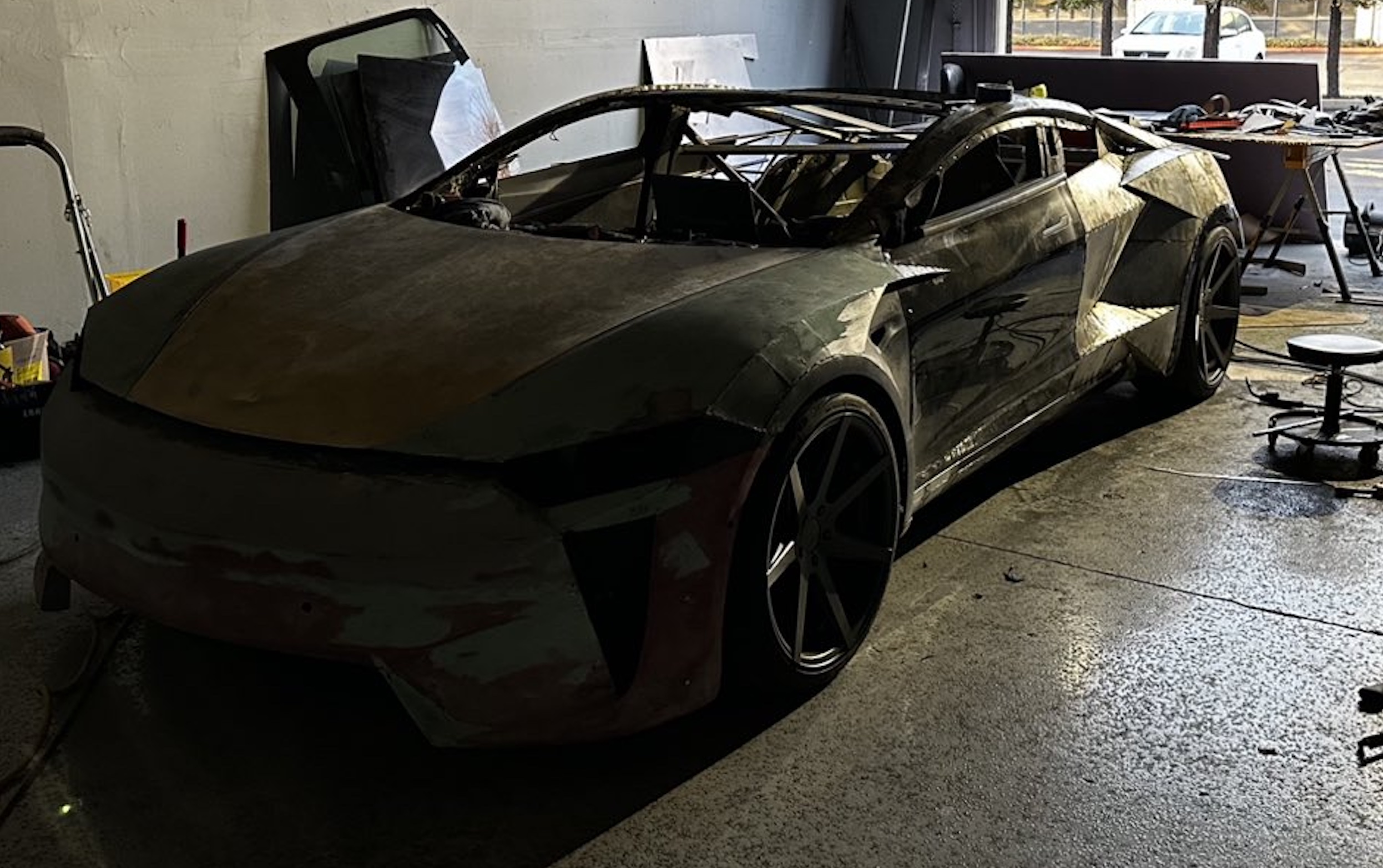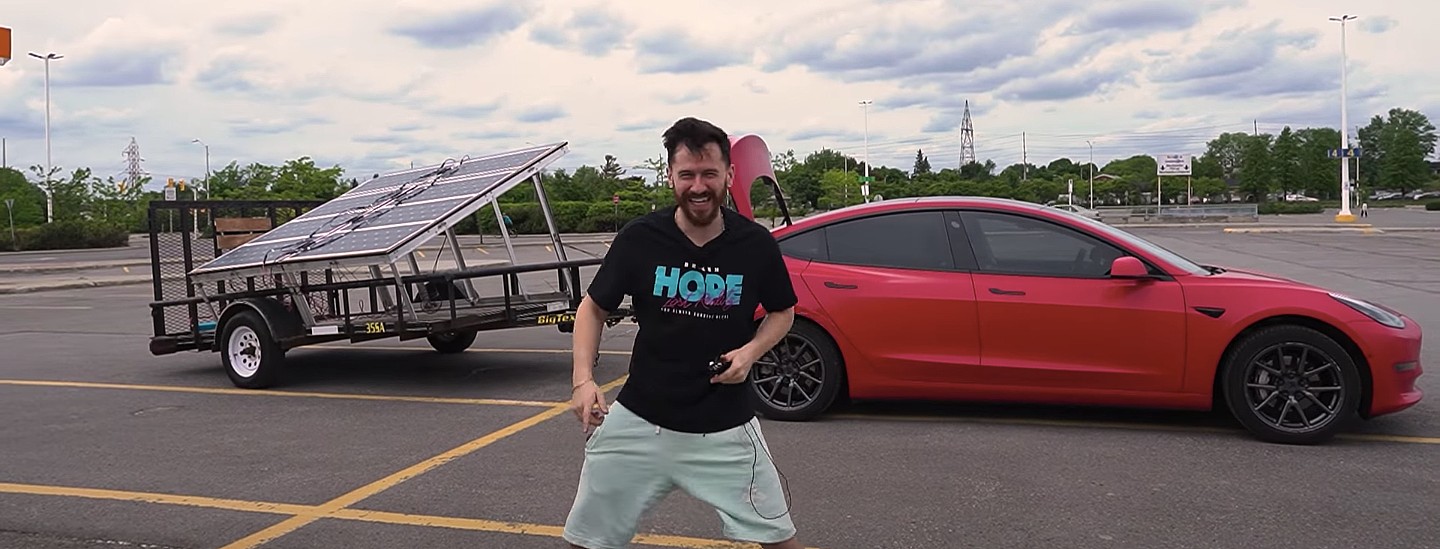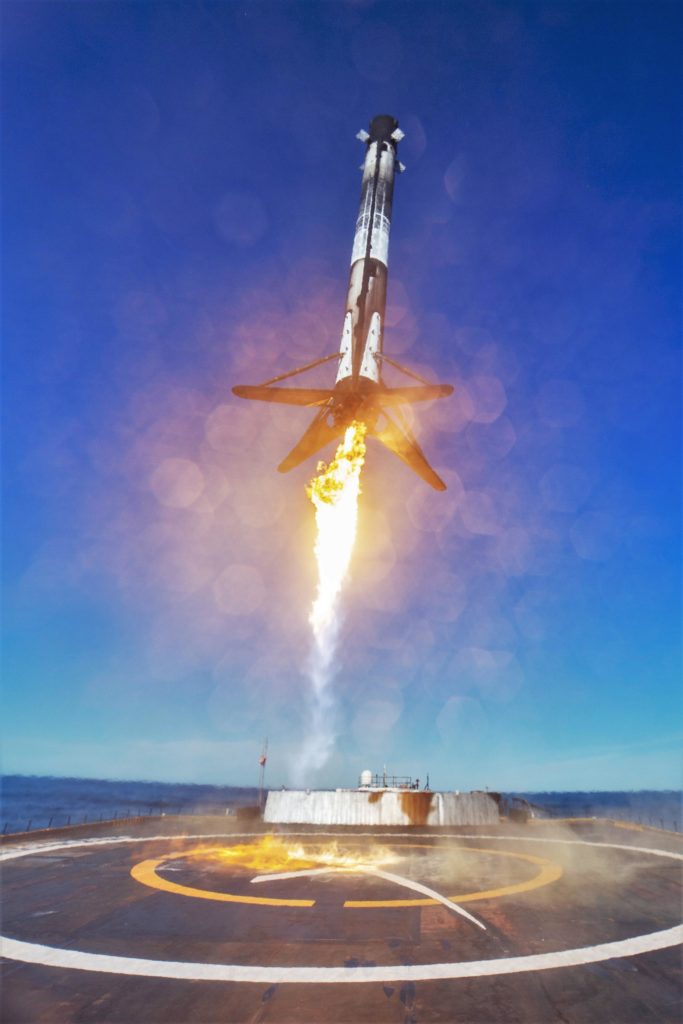

DIY
SpaceX’s Starship engine hits twice the thrust of Merlin just days after test debut
SpaceX CEO Elon Musk says that the company’s Raptor engine – static-fired for the first time at full scale barely four days ago – has been successfully fired at roughly 90% max thrust, briefly producing more than twice the force of one of Falcon 9’s Merlin 1D engines.
Relying on SpaceX’s McGregor, Texas test facilities for its testing, Raptor was being fed with propellant significantly warmer than the supercool liquid methane and oxygen it was nominally designed to use. Even still, the 172 tons (380,000 lbf) of thrust it produced is apparently already enough to satisfy the design requirements of Starship and Super Heavy, and Musk believes that with properly cooled propellant, the same Raptor engine could produce more than 200 tons of thrust at full throttle.
Design requires at least 170 metric tons of force. Engine reached 172 mT & 257 bar chamber pressure with warm propellant, which means 10% to 20% more with deep cryo.
— Elon Musk (@elonmusk) February 7, 2019
Following a presumably successful inaugural test fire on February 3rd, SpaceX added some rare technical insight to Raptor’s performance, stating that it had “hit 170 bar [in the combustion chamber] and [produced] ~116 metric tons” of thrust while operating at “60% power.” Suggesting that Raptor has already met certain design expectations less than 100 hours into integrated hot-fire testing, Musk’s technical update indicates that the engine may already be operating (more or less) as expected at something approximating full throttle.
Even for SpaceX, the speed of progression demonstrated thus far by SpaceX’s Raptor propulsion team is almost unbelievable in the context of just how utterly different the engine is from anything SpaceX is familiar with, let alone the field of liquid rocket propulsion as a whole. As long as the company is not consciously taking major risks or cutting corners with such an expedited test program, it’s safe to conclude that the data Raptor’s has produced with its first several tests is extremely encouraging, verifying that the engine is likely behaving almost exactly as expected from an engineering perspective. As a result, the engine’s testing jumped from 60% power to the equivalent of full-throttle (with off-nominal propellant temperatures) in four days.
“I’m really excited about this engine design, I think the SpaceX propulsion, [structures, and aero teams] have done a phenomenal job [designing Raptor].” – Elon Musk, September 2018
According to Musk, the fact that Raptor can already produce more than 170 metric tons of thrust indicates that it can already support the designs of BFR’s Starship upper stage and Super Heavy booster without requiring changes. Put in simpler terms, Super Heavy’s 31 Raptors must be able to produce at least ~5300 tons (11.7 million lbf) of thrust to safely lift off and reach a healthy velocity before running out of propellant, while Starship (featuring 7 Raptors) needs roughly ~1350 tons (3 million lbf) of thrust to make it to Earth orbit with a significant payload.
— Elon Musk (@elonmusk) February 4, 2019
Balancing the burn
It’s worth noting that while Musk’s claims may well be entirely true, they almost entirely sidestep the technical yardsticks that will actually determine whether Raptor will allow BFR to be as reusable and reliable as SpaceX’s next-generation rocket needs to be for the company to sustainably achieve its goals of interplanetary colonization and ultra-affordable access to space. While achieving expected thrust is a foundational step forward for the first full-scale Raptor, the engine’s aircraft-like reusability and reliability are ultimately far more important for Starship and Super Heavy. A Raptor that can achieve nominal thrust levels but only at the cost of rapid combustion chamber or preburner wear would severely hobble the economic viability of BFR.
“[Raptor’s flight] design is much lighter and tighter, and is extremely focused on reliability. The objective is to meet or exceed passenger airline levels of safety.” – Elon Musk, October 2017
This is by no means to doom-and-gloom SpaceX’s extraordinary achievements with Raptor’s design, development, and testing. At the end of the day, the BFR development program will require hundreds of millions or even billions of dollars of investment to reach its first orbital launch, said by Musk to have a 60% chance of occurring before the end of 2020. Even if it turns out that Raptor still has a long, long, long ways to go to reach SpaceX’s performance needs, the company’s excellent propulsion team has a minimum of 12-24 months to test, analyze, and perfect the propulsion system. As long as SpaceX engineers can ensure that it is at least as reusable as Falcon 9 Block 5 (aspirationally), BFR does not need to have perfect reusability before its first demonstration launches.
Although its bar is set far higher than Falcon 9’s was, BFR can still be expected to debut a few steps behind its long-term design goals, only reaching them once enough experience has been gained by building, testing, launching, and reusing the hardware in question.
- SpaceX has now been routinely reusing Falcon 9 rockets on commercial missions for nearly two years. (SpaceX)
- It remains to be seen if BFR can be made as reusable and reliable as it will need to be to sustainably support interplanetary humans. (SpaceX)
- BFR’s booster, now known as Super Heavy. (SpaceX)
Check out Teslarati’s newsletters for prompt updates, on-the-ground perspectives, and unique glimpses of SpaceX’s rocket launch and recovery processes!
DIY
Tesla Model 3 pickup “Truckla” gets updates and a perfectly wholesome robot charger

Back in 2019, YouTuber Simone Giertz, the self-proclaimed “Queen of Sh*tty Robots,” created a one-off Tesla Model 3 build that took the automotive world by storm. Fondly dubbed as “Truckla,” Giertz noted that the vehicle was actually her dream car — as crazy as that may sound.
Now almost four years later, the YouTuber posted an update on Truckla. And just like every other big project that one probably started, Giertz stated that she actually stopped working on Truckla when the vehicle was about 80% complete. The car is driving though, but a lot of stuff was not really working very well.
Thus, for her Truckla update, Giertz shared how most of her Model 3 pickup truck conversion was essentially completed. Truckla got a lot of detailing done, she got a slight lift, and she now has a functional tailgate. One has to admit, Truckla’s tailgate is pretty darn cool.
The “Queen of Sh*tty Robots” also opted to give Truckla a friend in the form of an automatic robot charger. Unlike Tesla’s rather interesting snake charger from years past, Truckla’s charger would come in the form of a rover, thanks to her friends at robotics platform Viam. Giertz aptly named Truckla’s robot charger friend “Chargela,” which is an appropriate name for such an invention.
Also true to form for Giertz, Chargela’s first encounter with Truckla was just a tiny bit awkward. One could say that Chargela may have just been a little bit nervous on his first try without human hands helping him. Most importantly, the system did work, so Giertz would likely keep using Chargela for her Model 3 pickup.
Teslas are very tech-heavy vehicles, so projects like Giertz’s Truckla are always remarkable. The fact that the Model 3 works perfectly fine despite having a good chunk of it cut off and turned into a pickup truck bed is mighty impressive any way one looks at it. Overall, Truckla will always be one of the coolest Tesla DIY projects to date, so any updates about the vehicle are always appreciated.
Truckla’s nearly four-year update can be viewed below.
Don’t hesitate to contact us with news tips. Just send a message to simon@teslarati.com to give us a heads up.
DIY
Tesla fan creating ‘CyberRoadster’ using Model 3 Performance parts in epic DIY build

A Tesla owner is taking his hobby and love for electric vehicles to new levels by creating what could only be described as one of the coolest EV-related DIY projects to date. The idea for the project is simple: what happens when you cross a supercar with the Cybertruck? You end up with a two-seater CyberRoadster.
Tesla owner David Andreyev, who goes by the username @Cyber_Hooligan_ on Twitter, has spent the last few months creating a Cybertruck-inspired version of the next-generation Roadster made from a salvaged Model 3 Performance. Starting with a Model 3 Performance is an inspired choice, considering that it is Tesla’s first vehicle that has a dedicated Track Mode.
A look at Andreyev’s YouTube channel, which can be accessed here, shows the meticulous build that the Tesla owner has implemented on the project car. What’s particularly cool about the CyberRoadster is the fact that it’s being built with parts that are also from other Tesla vehicles, like its front bumper that came from a new Model S. Recent videos suggest that the project car’s rear bumper will be from a new Model S as well.
The journey is long for Andreyev, so the completion of the CyberRoadster will likely take some more time. Despite this, seeing the Tesla owner’s DIY journey on such an epic build is more than satisfying. And considering that the CyberRoadster is evidently a labor of love from the Tesla owner, the final results would likely be extremely worth it.
There’s a lot of crazy Tesla modifications that have been done as of late. But some, as it is with a lot of things on the internet these days, have become more silly gimmicks than serious automotive projects. Fortunately, car enthusiasts like Andreyev, who just happen to also love electric vehicles, are taking it upon themselves to create one-of-a-kind EVs that would surely capture the attention of anyone on the road.
Check out the latest video in the CyberRoadster’s creation below.
Don’t hesitate to contact us with news tips. Just send a message to simon@teslarati.com to give us a heads up.
DIY
Tesla owner ‘charges’ Model 3 with homemade solar panel trailer

A Tesla owner has demonstrated a rather novel way to charge his Model 3. In a recent video, Sean Callaghan of the ItsYeBoi YouTube channel opted to use a series of off-the-shelf solar panel sheets onto a towable trailer to create a mobile charging unit for his all-electric sedan.
Callaghan planned to use only the sun and the solar sheets purchased from e-commerce platform Wish to charge his Model 3. The solar panel sheets would collect energy from the sun and transfer it to a control panel. The control panels were connected to batteries that would hold the energy—the batteries connected to an inverter, which would then charge the Tesla Model 3.
The entire assembly would provide the Model 3 with about 800 watts of energy on a completely sunny day. However, Callaghan shot the video when weather was overcast, so the entire solar panel trailer build only managed to provide around 300 watts throughout the YouTube host’s test.
To put this into perspective, a 100 volt home wall outlet provides 1.4 kilowatts of power, or 1,400 watts. Therefore, the 300-watt solar panel assembly built by Callaghan was producing less than 25% of the energy of a typical wall outlet. This is pretty marginal compared to Tesla’s 250-kilowatt V3 Superchargers, which provides 250,000 watts, or about 833 times as much power as the makeshift solar panel build.
However, Callaghan’s goal was not to charge the vehicle quickly. He explained the idea came from a previous video where he used a $5,000 Wish-purchased wind turbine to charge his Model 3. He wanted to test the effectiveness and efficiency of the system, which was questionable due to the time it would take to charge the battery fully.
The Model 3 battery pack is 78 kWh, and with Callaghan’s 300-watt system charging his electric vehicle, it would take 260 hours to supply the Tesla’s battery to full capacity.
In the past, electric vehicle enthusiasts have asked Tesla CEO Elon Musk why the company’s vehicles do not contain solar glass roofing, which would charge the car while the owner is driving. Musk has explained that the efficiency of this idea is challenging and likely would not provide an ample amount of range.
When asked about the idea of putting solar panels on the top of Tesla’s vehicles in 2017, Musk responded that the idea was “Not that helpful, because the actual surface of the car is not that much, and cars are often inside. The least efficient place to put solar is on the car.” It also would not be cost-effective for Tesla because “the cost of the panels and electronics, R&D and assembly would never pay for itself in the life of the vehicle, compared to charging from the wall in your garage,” Quartz noted.
That being said, Tesla plans to implement solar panels onto the motorized tonneau of the upcoming Cybertruck. The idea was discussed on Twitter when Musk stated that the optional feature would add “15 miles per day, possibly more” when parked in the sunlight. Also, fold-out solar wings could help capture enough solar energy for 30 to 40 miles a day.
Watch Sean Callaghan’s video of his makeshift solar panel trailer below.
-

 Elon Musk1 week ago
Elon Musk1 week agoTesla investors will be shocked by Jim Cramer’s latest assessment
-

 Elon Musk3 days ago
Elon Musk3 days agoElon Musk confirms Grok 4 launch on July 9 with livestream event
-

 Elon Musk16 hours ago
Elon Musk16 hours agoxAI launches Grok 4 with new $300/month SuperGrok Heavy subscription
-

 News7 days ago
News7 days agoTesla Model 3 ranks as the safest new car in Europe for 2025, per Euro NCAP tests
-

 Elon Musk2 weeks ago
Elon Musk2 weeks agoA Tesla just delivered itself to a customer autonomously, Elon Musk confirms
-

 Elon Musk1 week ago
Elon Musk1 week agoxAI’s Memphis data center receives air permit despite community criticism
-

 Elon Musk2 weeks ago
Elon Musk2 weeks agoTesla’s Omead Afshar, known as Elon Musk’s right-hand man, leaves company: reports
-

 News2 weeks ago
News2 weeks agoXiaomi CEO congratulates Tesla on first FSD delivery: “We have to continue learning!”




















